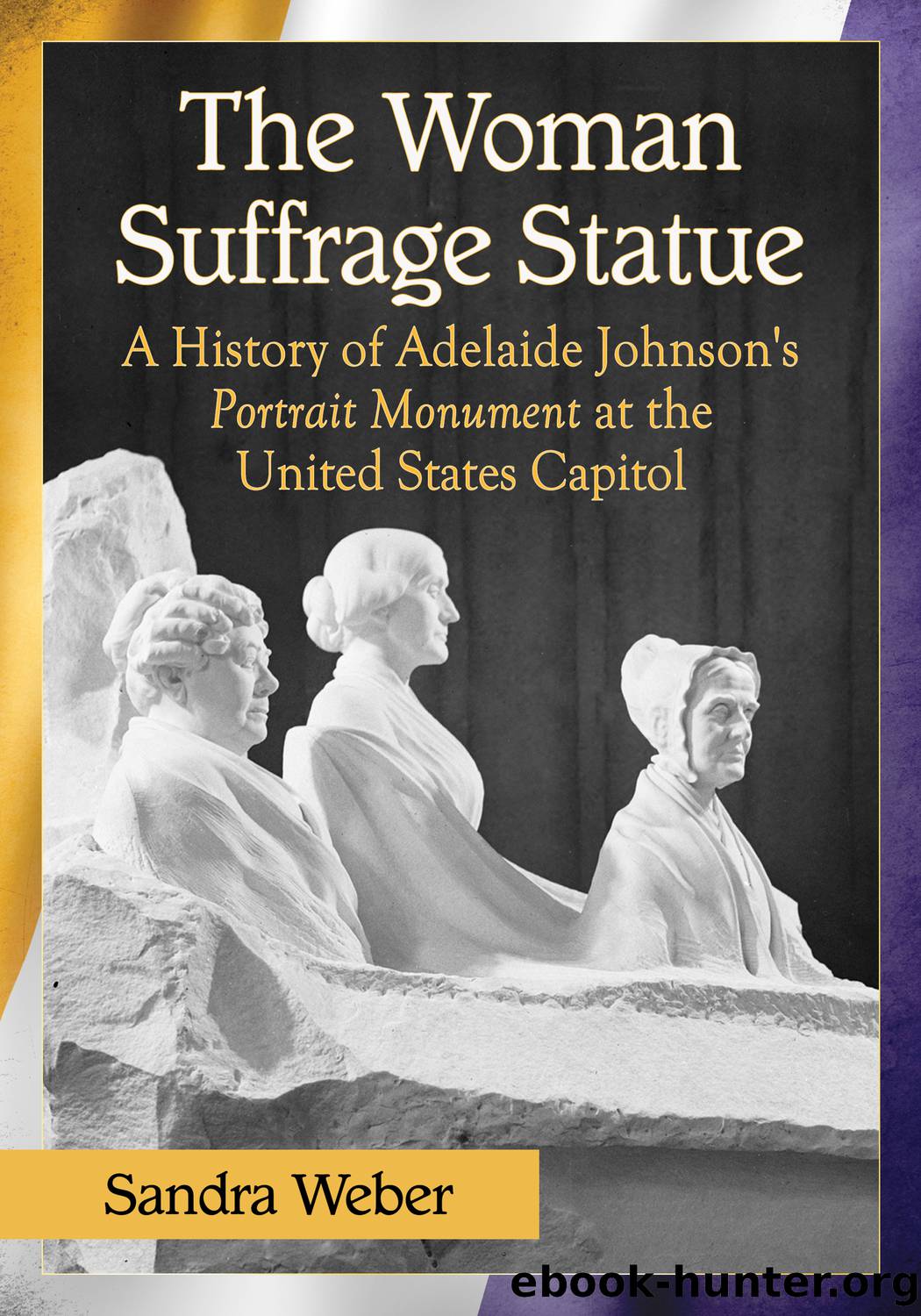The Woman Suffrage Statue: a History of Adelaide Johnson's Portrait Monument to Lucretia Mott, Elizabeth Cady Stanton and Susan B. Anthony at the United States Capitol by Sandra Weber

Author:Sandra Weber
Language: eng
Format: epub
Publisher: McFarland & Company, Inc., Publishers
Published: 2016-04-07T00:00:00+00:00
* * *
14. A Work of Art
* * *
The intensity and ferocity of criticisms of the Portrait Monument bewildered Adelaide Johnson. âSurely never did any work meet with more diverse motives in a conflicting hostility,â she wrote to the Architect of the Capitol on March 14, 1921.1
Not only had the monument created arguments at the Capitol, it had unsettled the National Womanâs Party. âWe always had harmony before,â said Dora Lewis, âwe never had any trouble until we undertook this monument.â2
Although the inscription undoubtedly aroused opposition, the controversy created by the monument was about more than those words. Some people involved in the original 1892 Bust Fund conflict held Johnson accountable and thus criticized the monument. Others opposed it for political reasons, such as anti-suffrage attitudes or disapproval of the methods employed by the NWP. Others disparaged the monumentâs artistic merit.
Senator James Wadsworth called the monument âbizarreâ and âutterly unacceptable.â He said the large block of marble was massive and âunwieldyâ and the portrait busts emerged âat irregular intervals and at varying levels.â He had hoped that the tribute to the women would be a âhandsome bas-reliefâ or something âof proper proportions and acceptable design.â He seemed to want something more diminutive and conventional.3
Adelaide Johnson believed that those representing Art had condemned the monument before it arrived and then further condemned it âbecause something new confronted them in composition and concept.â4 She addressed the criticism, saying: âIf I had brought you something like the Three Graces with arms twined around each other, you might have had an easy time of it. But a thousand years from now you would have seen no groups standing by the monument, asking questions. If I had brought you something mediocre instead of something of distinction, it would have attracted no comment. The work will stand.â5
She wanted the viewer to ponder, think, question, and comment. Like many artists, she never publicly stated the full meaning of the artwork or provided an interpretation of the composition. She wanted the work to speak for itself.
Johnson did discuss some aspects of the monumentâs design and composition in private letters and diary entries, and to a few reporters. Her idea was to present âthe living spirit of these women so lifelike and so full of the soul of womankindâ that the statue would go down through the ages âtelling the storyâ of the struggles these women endured for women all over the world.6 She claimed that, in a subtle though simple way, the composition told the story.
To understand Johnsonâs story requires an analysis of the monument beginning with a description of its components and their arrangement. Then, an interpretation of those components can be made from various viewpoints. Lastly, the monument as a whole can be evaluated.
To create a spectacular statue that would be a national treasure, Johnson chose to use white Carrara marble as she found it superior to other marble. Carrara, a small city in the northern part of Italy, was known as the marble and granite capitol of the world.
Download
This site does not store any files on its server. We only index and link to content provided by other sites. Please contact the content providers to delete copyright contents if any and email us, we'll remove relevant links or contents immediately.
The Art of Boudoir Photography: How to Create Stunning Photographs of Women by Christa Meola(18482)
Red Sparrow by Jason Matthews(5327)
Harry Potter 02 & The Chamber Of Secrets (Illustrated) by J.K. Rowling(3604)
In a Sunburned Country by Bill Bryson(3457)
Drawing Cutting Edge Anatomy by Christopher Hart(3427)
Figure Drawing for Artists by Steve Huston(3352)
Harry Potter and the Prisoner of Azkaban (Book 3) by J. K. Rowling(3256)
The Daily Stoic by Holiday Ryan & Hanselman Stephen(3201)
Japanese Design by Patricia J. Graham(3085)
The Roots of Romanticism (Second Edition) by Berlin Isaiah Hardy Henry Gray John(2859)
Make Comics Like the Pros by Greg Pak(2826)
Stacked Decks by The Rotenberg Collection(2781)
Draw-A-Saurus by James Silvani(2618)
Harry Potter and the Deathly Hallows (7) by J.K. Rowling(2615)
Tattoo Art by Doralba Picerno(2570)
On Photography by Susan Sontag(2548)
Churchill by Paul Johnson(2476)
The Daily Stoic by Ryan Holiday & Stephen Hanselman(2429)
Foreign Devils on the Silk Road: The Search for the Lost Treasures of Central Asia by Peter Hopkirk(2412)
